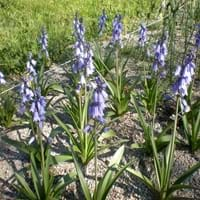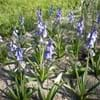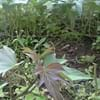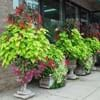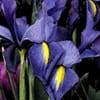Life Span
Perennial
Perennial
Type
Bulb or Corm or Tuber
Tree
Origin
Southern Europe, Western Europe, Northern Africa
China, Japan
Types
Hyacinthoides flahaultiana, Hyacinthoides mauritanica, Hyacinthoides reverchonii
it is a type of blueberry
Habitat
Parks, wastelands, Waysides, Woodland edges
Not Applicable
USDA Hardiness Zone
4-10
9-11
Sunset Zone
21,22
H1, 8, 9, 14, 15, 16, 17, 18, 19, 20, 21, 22, 23, 24
Habit
Clump-Forming
Upright/Erect
Flower Color
White, Blue, Pink, Blue Violet
White
Flower Color Modifier
Bicolor
Bicolor
Fruit Color
Not Available
Dark Blue, Black
Leaf Color in Spring
Green
Green, Dark Green, Bronze, Orange Red
Leaf Color in Summer
Light Green
Dark Green
Leaf Color in Fall
Several shades of Green
Dark Green
Leaf Color in Winter
Light Green
Red, Dark Green
Leaf Shape
Narrow
Crescent-shaped
Plant Season
Spring
Spring, Summer, Fall
Sunlight
Partial Sun, Partial shade
Full Sun, Partial Sun
Type of Soil
Loam
Loam, Sand
The pH of Soil
Acidic, Neutral
Acidic, Neutral
Soil Drainage
Well drained
Average
Bloom Time
Spring, Late Spring
Late Spring, Early Summer
Tolerances
Drought
Not Available
Where to Plant?
Ground
Ground
How to Plant?
By dividing rhizomes, tubers, From bulbs, Seedlings
Rooted stem cutting, Seedlings
Plant Maintenance
Medium
Low
Watering Requirements
Average Water Needs, Do Not over Water, Requires regular watering
Requires watering in the growing season, Water when soil is dry
In Summer
Lots of watering
Lots of watering
In Spring
Moderate
Moderate
In Winter
Average Water
Ample Water
Soil pH
Acidic, Neutral
Acidic, Neutral
Soil Type
Loam
Loam, Sand
Soil Drainage Capacity
Well drained
Average
Sun Exposure
Partial Sun, Partial shade
Full Sun, Partial Sun
Pruning
Pinch Tips, Remove damaged leaves, Remove dead branches, Remove dead leaves, Remove dead or diseased plant parts
Prune in winter, Prune when young, Remove branches, Remove short twigs
Fertilizers
High amounts of nutrients, organic fertlizers
All-Purpose Liquid Fertilizer, Fertilize in early spring, Mulch
Pests and Diseases
Red blotch
Black Silt, Leaf rust, Sooty Mold
Plant Tolerance
Drought
Not Available
Flower Petal Number
Single
Single
Foliage Texture
Medium
Medium
Foliage Sheen
Glossy
Glossy
Attracts
Birds, Butterflies, pollinators
Birds
Allergy
Pollen
Not Available
Aesthetic Uses
Showy Purposes
Bonsai, Showy Purposes
Beauty Benefits
Not Available
For treating wrinkles, Skin Problems
Environmental Uses
Air purification
Air purification, Shadow Tree
Medicinal Uses
Not Available
Bone strength, Cancer, Diabetes, Digestion problems, Heart problems, High blood pressure, Improving mental health, Vitamin C, Weight loss
Part of Plant Used
Flowers
Fruits
Other Uses
Beneficial species for attracting pollinators, Decoration Purposes, Showy Purposes, Used for Landscaping
Edible syrup, Employed in herbal medicine, Used As Food, Used as Ornamental plant
Used As Indoor Plant
No
No
Used As Outdoor Plant
Yes
Yes
Garden Design
Container, Cutflower, Mixed Border, Rock Garden / Wall, Wildflower
Hedges, Screening / Wind Break, Shade Trees, Street Trees
Botanical Name
HYACINTHOIDES hispanica
ELAEOCARPUS decipiens
Common Name
Spanish Bluebell
Japanese Blueberry
In Hindi
Bluebell plant
जापानी ब्लूबेरी
In German
Endymion Pflanze
japanische Blaubeere
In French
plante Bluebell
bleuet japonais
In Spanish
planta Bluebell
arándanos japonés
In Greek
φυτό Bluebell
ιαπωνική βατόμουρου
In Portuguese
planta Bluebell
blueberry japonês
In Polish
Bluebell roślin
Japoński borówki
In Latin
Bluebell herba
Vaccinium Italica
Phylum
Magnoliophyta
Not Available
Class
Liliopsida
Not Available
Order
Liliales
Oxalidales
Family
Liliaceae
Elaeocarpaceae
Genus
Hyacinthoides
Elaeocarpus
Clade
Angiosperms, Monocots
Angiosperms, Eudicots, Rosids
Tribe
Hyacintheae
Not Available
Subfamily
Scilloideae
Not Available
Season and Care of Bluebell and Japanese Blueberry
Season and care of Bluebell and Japanese Blueberry is important to know. While considering everything about Bluebell and Japanese Blueberry Care, growing season is an essential factor. Bluebell season is Spring and Japanese Blueberry season is Spring. The type of soil for Bluebell is Loam and for Japanese Blueberry is Loam, Sand while the PH of soil for Bluebell is Acidic, Neutral and for Japanese Blueberry is Acidic, Neutral.
Bluebell and Japanese Blueberry Physical Information
Bluebell and Japanese Blueberry physical information is very important for comparison. Bluebell height is 30.00 cm and width 15.00 cm whereas Japanese Blueberry height is 910.00 cm and width 610.00 cm. The color specification of Bluebell and Japanese Blueberry are as follows:
Bluebell flower color: White, Blue, Pink and Blue Violet
Bluebell leaf color: Green
Japanese Blueberry flower color: White
- Japanese Blueberry leaf color: Green, Dark Green, Bronze and Orange Red
Care of Bluebell and Japanese Blueberry
Care of Bluebell and Japanese Blueberry include pruning, fertilizers, watering etc. Bluebell pruning is done Pinch Tips, Remove damaged leaves, Remove dead branches, Remove dead leaves and Remove dead or diseased plant parts and Japanese Blueberry pruning is done Prune in winter, Prune when young, Remove branches and Remove short twigs. In summer Bluebell needs Lots of watering and in winter, it needs Average Water. Whereas, in summer Japanese Blueberry needs Lots of watering and in winter, it needs Ample Water.
